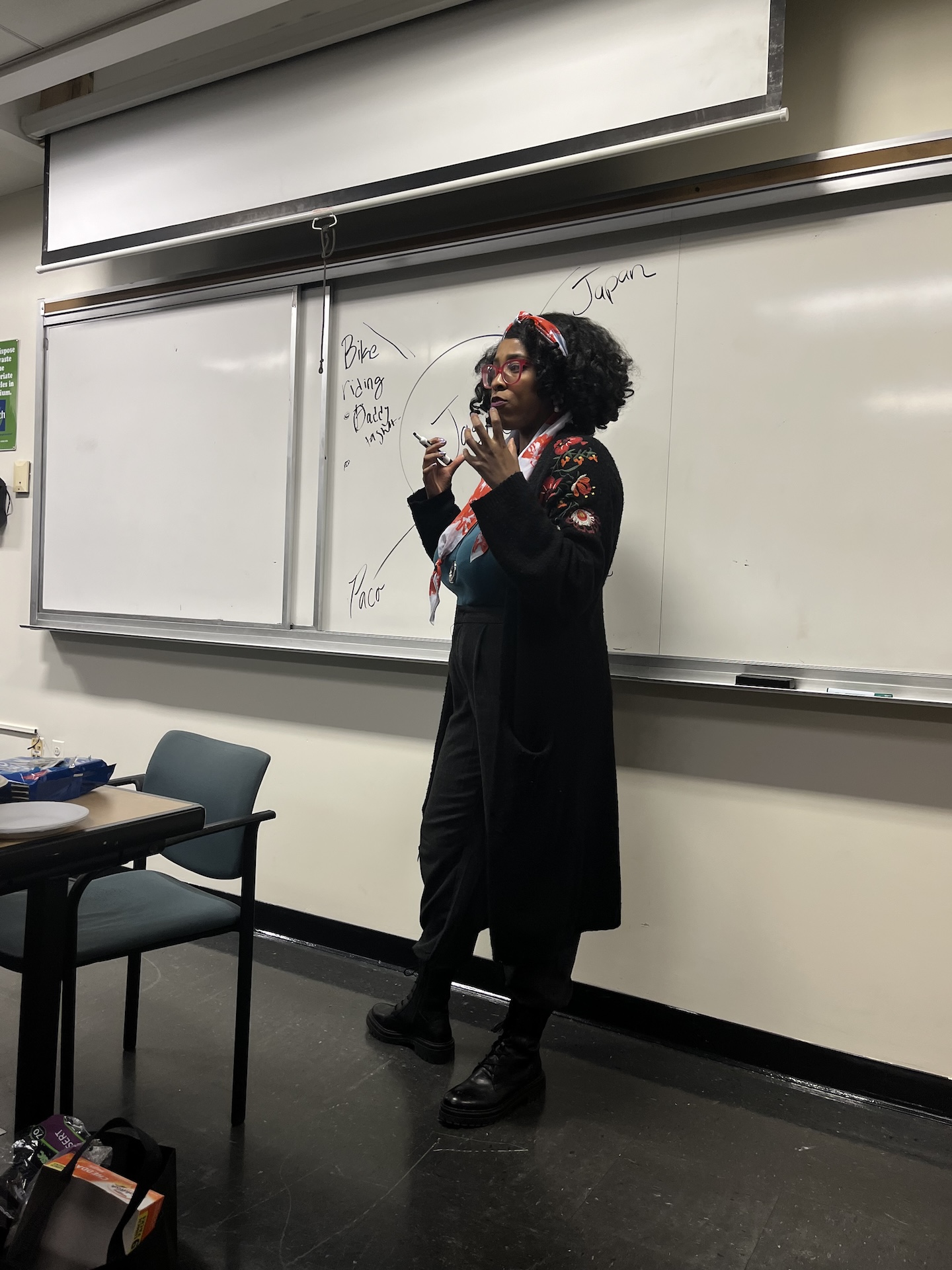By Jasmeene Francois

Two weeks ago, I had the tremendous honor of guest teaching Storytelling alongside Ph.D. Candidate Vallerie Matos for Dr. Shelly Eversley’s Climate Justice course at Baruch College, CUNY. This undergraduate, interdisciplinary, and experiential learning course is a new offering from the Department of Black and Latino Studies.
In this three-hour session, students practiced the essentials of storytelling, brainstormed story ideas, and reflected on how to use their stories to make short documentaries that connect details of the global climate emergency to their lived experiences in New York City. One of the most important goals of this session was to help the students learn about different models of storytelling and to comb through their personal narratives to incorporate them into their fact-based solutions about climate justice issues. Their final projects will air as a special episode on CUNY TV’s “Sustainability Matters.”
As planned, Vallerie and I carefully scaffolded the lesson into three parts. The first part of the course included icebreakers that eased students into telling stories. We began with a classic—sharing fun or weird personal facts. After this activity, the “Name Story” followed. In this longer icebreaker, everyone in the class shared a brief history of their name or nickname. As instructors, we modeled different ways the students could talk about their name stories, demonstrating how students can approach them. For instance, I shared that I changed the spelling of my name so that English speakers could pronounce it closer to the Haitian Kreyole pronunciation. While experimenting with different spelling variations, it became a way to claim my Haitian diasporic identity. Even if students do not know the meaning or how they got their name, they can share a nickname they have, or they can talk about how they feel about their name. This activity fostered community and helped students jump into the storytelling process to brainstorm their ideas for their documentary projects.
After the icebreakers, we discussed how to develop personal stories. Later in the semester, the students will use their stories to build narratives for their climate advocacy and climate justice documentaries. We showed an example from Moth, a well-known storytelling organization. After watching the story, we talked about what we noticed and liked. Afterward, I gave a short lecture on the components and structure of storytelling.
Although we showed a Moth story, there are many different story structures students can draw inspiration from, such as StoryCorps. With story components and structures in mind, we began brainstorming. With brainstorming, we wanted to offer a variety of ways for students to think about their personal stories. Life mind map was the first, followed by the Neighborhood Map. Life mind map asks students to think of 3 to 4 important aspects of their life, each with a bubble. (e.g., person, place, thing, hobby) so that the finished product looks like a web. After thinking of these topics, they jot down as many memories associated with bubbles as they can remember. Then, they reviewed those bubbles and considered how each memory might connect to the climate or an environmental issue. While doing the neighborhood map, students thought of and drew a favorite place or anywhere with many memories. Examples included a childhood home, a school, a park, or a beloved beach. Around the drawing, students jot down memories of this place.
Because of the subject of their documentaries, the students also mapped how their stories linked with the climate and the impacts of global warming. Following these exercises, Vallerie led us through writing exercises so that the students deepen their understanding of how their personal stories connect with the climate.
Before discussing how these stories could appear in their documentary projects, students had the chance to share a two- to three-minute story draft from one of the brainstorming prompts. In the last half hour of class, we watched the documentary After Maria for a few minutes. With this example, the students were able to connect and understand how they can use their personal stories to talk about how their stories can be used to advocate for climate justice.
Vallerie and I will visit these wonderful students throughout March. We’ll hear how they’ve developed their stories to intersect with the climate justice issues that matter to them. Together, we’ll help them integrate data and science into their stories so they can contribute their unique knowledge to help resolve the climate emergency.






